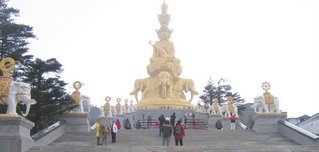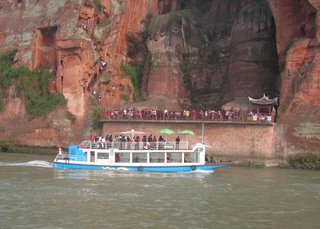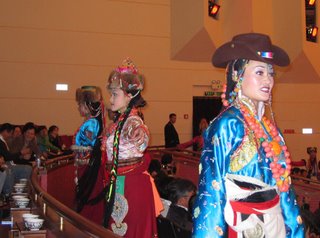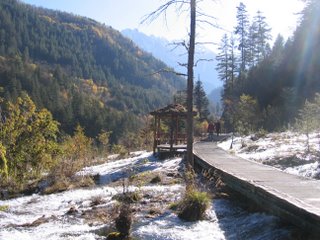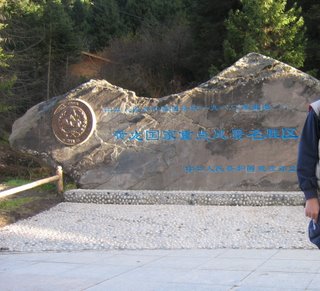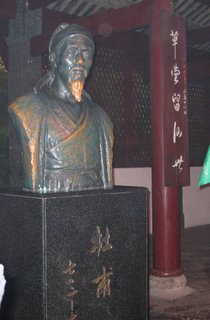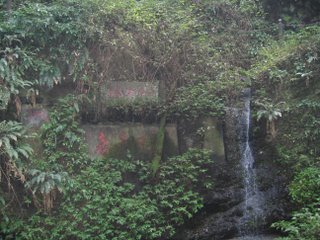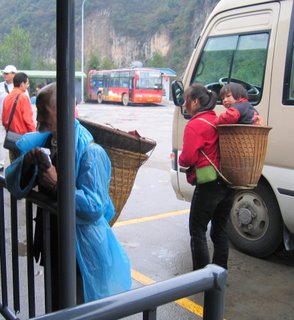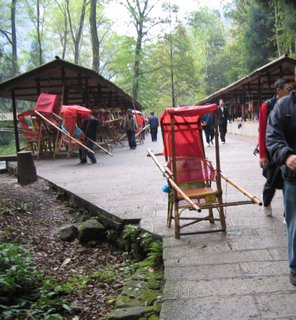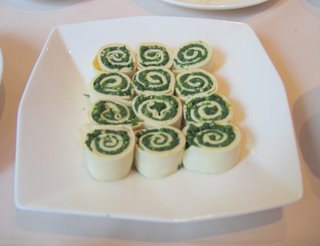25. From the Golden Peak to the Golden Monkeys of Mt. Emei
For centuries, devout Buddhists have paid pilgrimage by trekking up the thousands of steps it takes to get up the mountain. The temples were initially developed, interestingly enough, about the same time as when the early Christians were starting to spread the gospels, at around 25-220 AD. Some said that having completed a pilgrimage up the mountain is already a major spiritual reward, not including the health benefits of the walk.
 But for us mere tourists, we are supposed to enjoy the four famous view: The Sunrise, The Cloud Sea, the Buddhist Light, and the Saint Lamp. Each view is to be seen at a different time of the day, morning, day light, late in the afternoon, and at night, respectively. In this afternoon, we did see the sea of clouds rushing up the mountain side, slowly engulfing the silver Palace.
But for us mere tourists, we are supposed to enjoy the four famous view: The Sunrise, The Cloud Sea, the Buddhist Light, and the Saint Lamp. Each view is to be seen at a different time of the day, morning, day light, late in the afternoon, and at night, respectively. In this afternoon, we did see the sea of clouds rushing up the mountain side, slowly engulfing the silver Palace. But what was more interesting is actually behind these large temples. For there was quite a lot of construction still going on. Since the peak is at such a high altitude, the question that always arises is how do they move all the construction material up the mountain when there are no roads. The romantic answer is shown by this next photo: all material were borne on the backs of laborers. But in reality, I also saw some hoisting cables at the back but still, the last few steps were on human backs.
But what was more interesting is actually behind these large temples. For there was quite a lot of construction still going on. Since the peak is at such a high altitude, the question that always arises is how do they move all the construction material up the mountain when there are no roads. The romantic answer is shown by this next photo: all material were borne on the backs of laborers. But in reality, I also saw some hoisting cables at the back but still, the last few steps were on human backs. If you look at the picture closely, you would see that these two are standing still with their load resting on poles. What we learned was that these bearers would take up a load, walk up the flight of stairs and would always stop completely still for a few minutes to catch their breath, and then resume the way up. This of course gave us tourists a perfect picture taking opportunity!
If you look at the picture closely, you would see that these two are standing still with their load resting on poles. What we learned was that these bearers would take up a load, walk up the flight of stairs and would always stop completely still for a few minutes to catch their breath, and then resume the way up. This of course gave us tourists a perfect picture taking opportunity!Apparently, this is what they do every day, day in day out, for $30RMB (~$4USD) a day. That's quite a way to make a living! I suppose they are physically very fit and perhaps also spiritually satisfied for doing a religious deed.

On our walk down the mountain, we were repeatedly warned about the ZhangNie monkeys that roam the peak area. The sign here said that too. But, alas, right after I took this picture, this monkey jumped me, wanting to take away a white plastic bag that I was carrying that contained a local delicacy. I am happy to report that, thank you very much, this monkey business did not harm me nor frightened me. Indeed, I was quite pleasantly surprised by all the attention!
Mt. Emei was the last stop in our tour. We went back to Chengdu, had a great dinner, and flew back to Guangzhou the next day.


